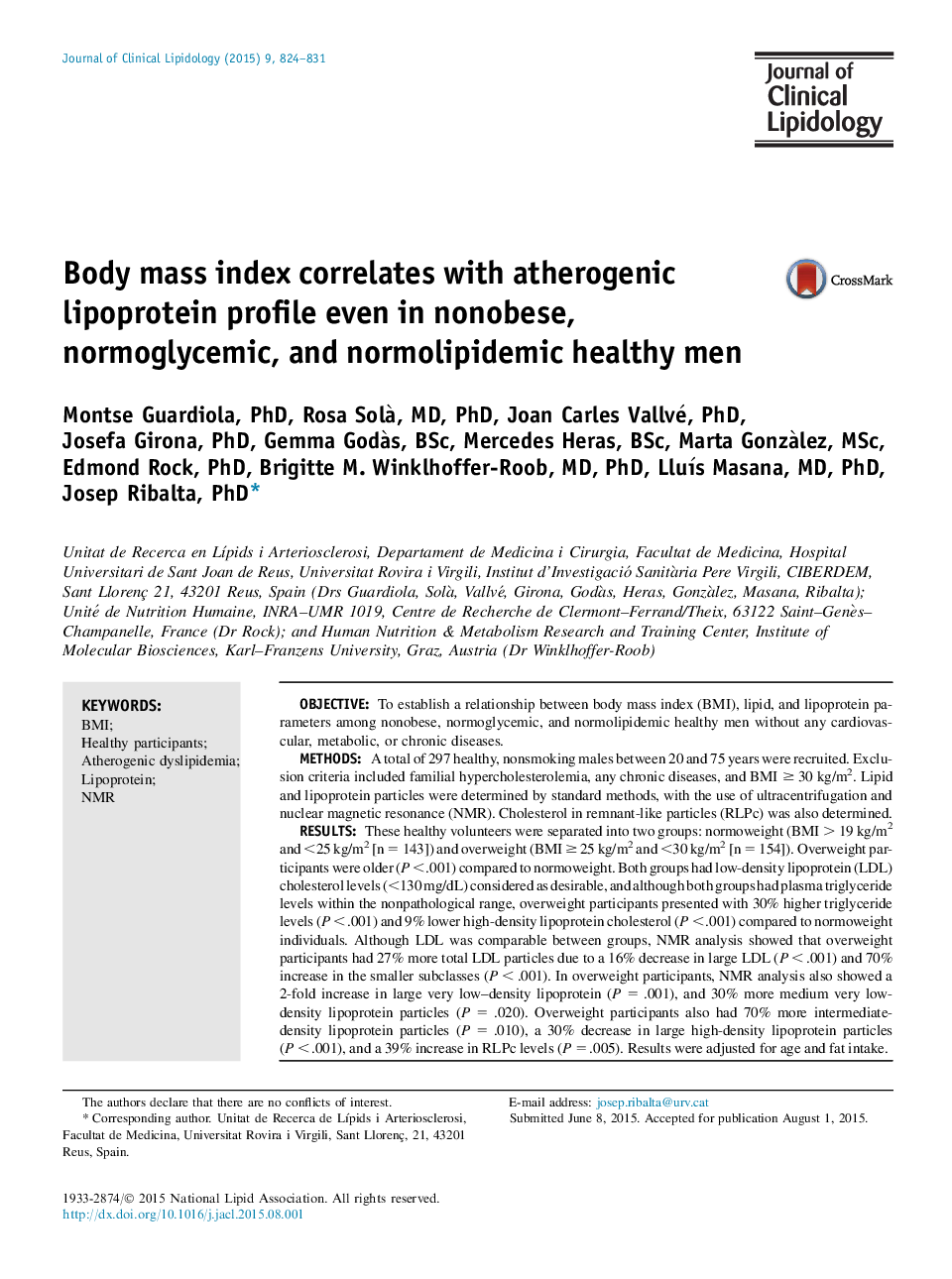| Article ID | Journal | Published Year | Pages | File Type |
|---|---|---|---|---|
| 5985809 | Journal of Clinical Lipidology | 2015 | 9 Pages |
â¢Some lipid changes are not visible in the routine clinical biochemistry.â¢NMR unravels such atherogenic lipoprotein changes.â¢Weight gain promotes NMR atherogenic lipoprotein changes even in the non-obese.
ObjectiveTo establish a relationship between body mass index (BMI), lipid, and lipoprotein parameters among nonobese, normoglycemic, and normolipidemic healthy men without any cardiovascular, metabolic, or chronic diseases.MethodsA total of 297 healthy, nonsmoking males between 20 and 75 years were recruited. Exclusion criteria included familial hypercholesterolemia, any chronic diseases, and BMI ⥠30 kg/m2. Lipid and lipoprotein particles were determined by standard methods, with the use of ultracentrifugation and nuclear magnetic resonance (NMR). Cholesterol in remnant-like particles (RLPc) was also determined.ResultsThese healthy volunteers were separated into two groups: normoweight (BMI > 19 kg/m2 and <25 kg/m2 [n = 143]) and overweight (BMI ⥠25 kg/m2 and <30 kg/m2 [n = 154]). Overweight participants were older (P < .001) compared to normoweight. Both groups had low-density lipoprotein (LDL) cholesterol levels (<130 mg/dL) considered as desirable, and although both groups had plasma triglyceride levels within the nonpathological range, overweight participants presented with 30% higher triglyceride levels (P < .001) and 9% lower high-density lipoprotein cholesterol (P < .001) compared to normoweight individuals. Although LDL was comparable between groups, NMR analysis showed that overweight participants had 27% more total LDL particles due to a 16% decrease in large LDL (P < .001) and 70% increase in the smaller subclasses (P < .001). In overweight participants, NMR analysis also showed a 2-fold increase in large very low-density lipoprotein (P = .001), and 30% more medium very low-density lipoprotein particles (P = .020). Overweight participants also had 70% more intermediate-density lipoprotein particles (P = .010), a 30% decrease in large high-density lipoprotein particles (P < .001), and a 39% increase in RLPc levels (P = .005). Results were adjusted for age and fat intake.ConclusionBMI correlates with a shift toward a more proatherogenic lipoprotein profile even in individuals whose lipid levels were not elevated.
